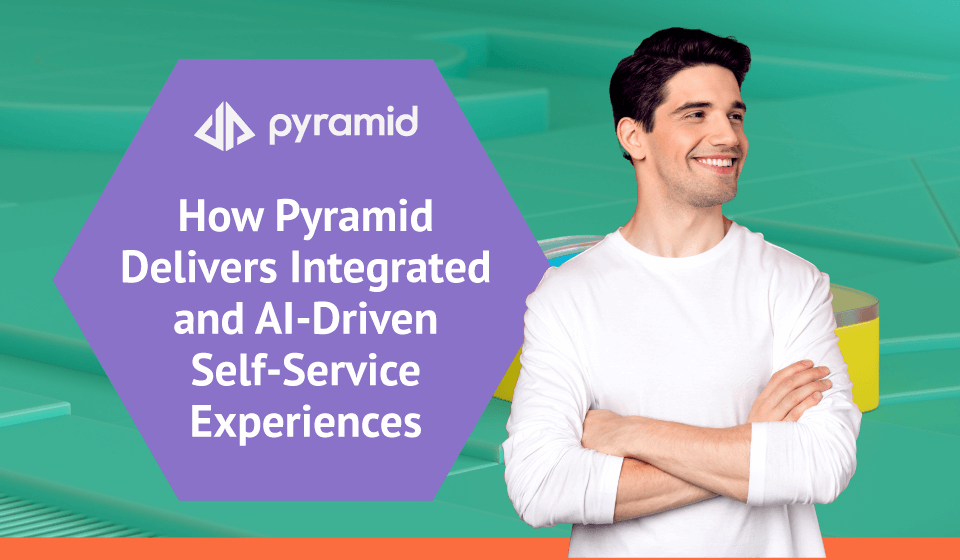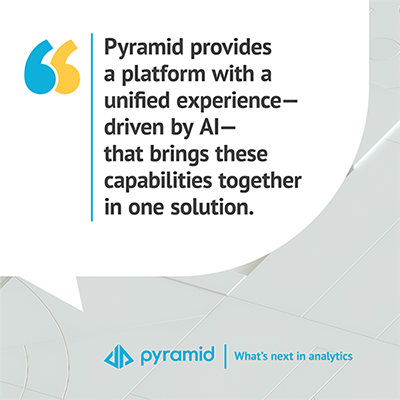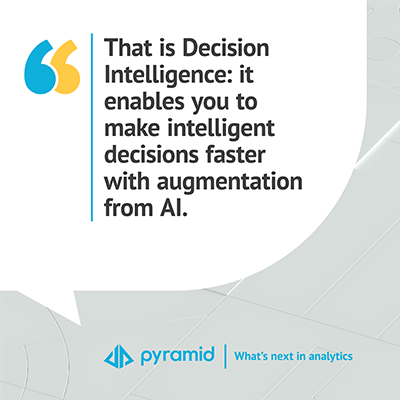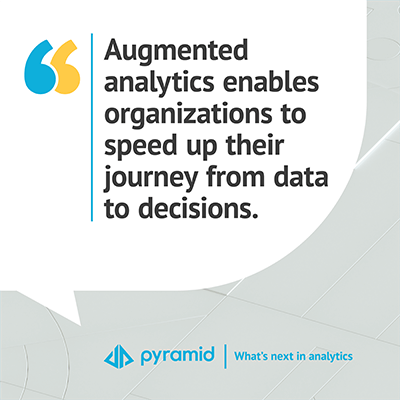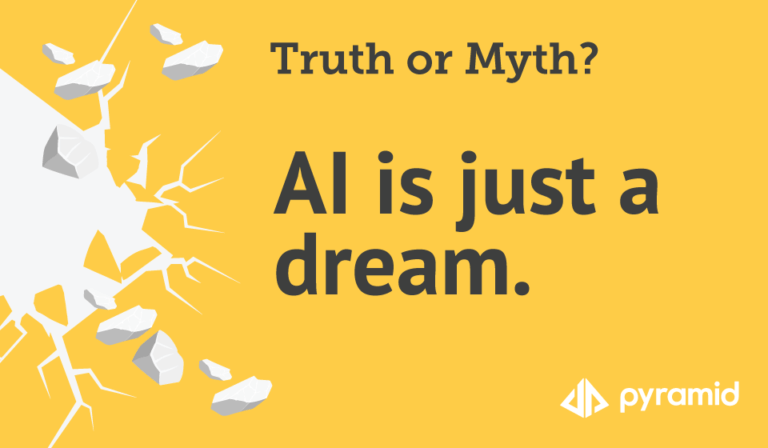What do augmented analytics look like in Pyramid?
So how does the Decision Intelligence Platform incorporate augmented capabilities? Let’s look at some examples.
Augmented capabilities in the data preparation and discovery phases enable non-technical people to automatically ingest data from data sources, discover tables, columns, column types, and metrics, and define their relationships using AI algorithms. They can also automatically add time dimensions and hierarchies with a few clicks in a no-code environment.
The platform automatically runs heuristics on data to show relevant correlations to uncover patterns across different data that can be used for analysis. The heuristics engine can also make relevant visualizations in reports and dashboards based on the type, size, and density of data that has been analyzed. Analytical operations and calculations based on time hierarchy (such as year-to-date, quarter-to-date, etc.) are automatically generated, and corresponding visualizations are displayed based on the data element.
This AI-guided, no-code environment also delivers automated insights around the data, such as forecasting, Pareto analysis, category analysis, composite views of multiple analyses, and many other complex calculations. It also provides the flexibility to build their discovery and analysis along with various calculations, visualizations, etc.
Natural language queries (NLQ) enable non-technical people to ask questions in simple words and get answers. For example, they can ask for sales forecasting for the next six months. The system will automatically calculate sales across relevant dimensions such as time or region and forecast the numbers with the appropriate visualization. NLQ also enables non-technical people to add, replace, remove, and swap data elements using simple words. They can conduct complex decision tree segment analysis in a few clicks, delivering answers in seconds. Dynamic tooltips can also be made available using augmented analytics.
All these capabilities and more are fully integrated into the platform, don’t require separate tools or modules, and don’t require additional SKUs or licenses. And—perhaps even more crucially—Pyramid applies these augmented capabilities against the full range of data (across all sources), not merely extracts, all with blazingly fast performance.



